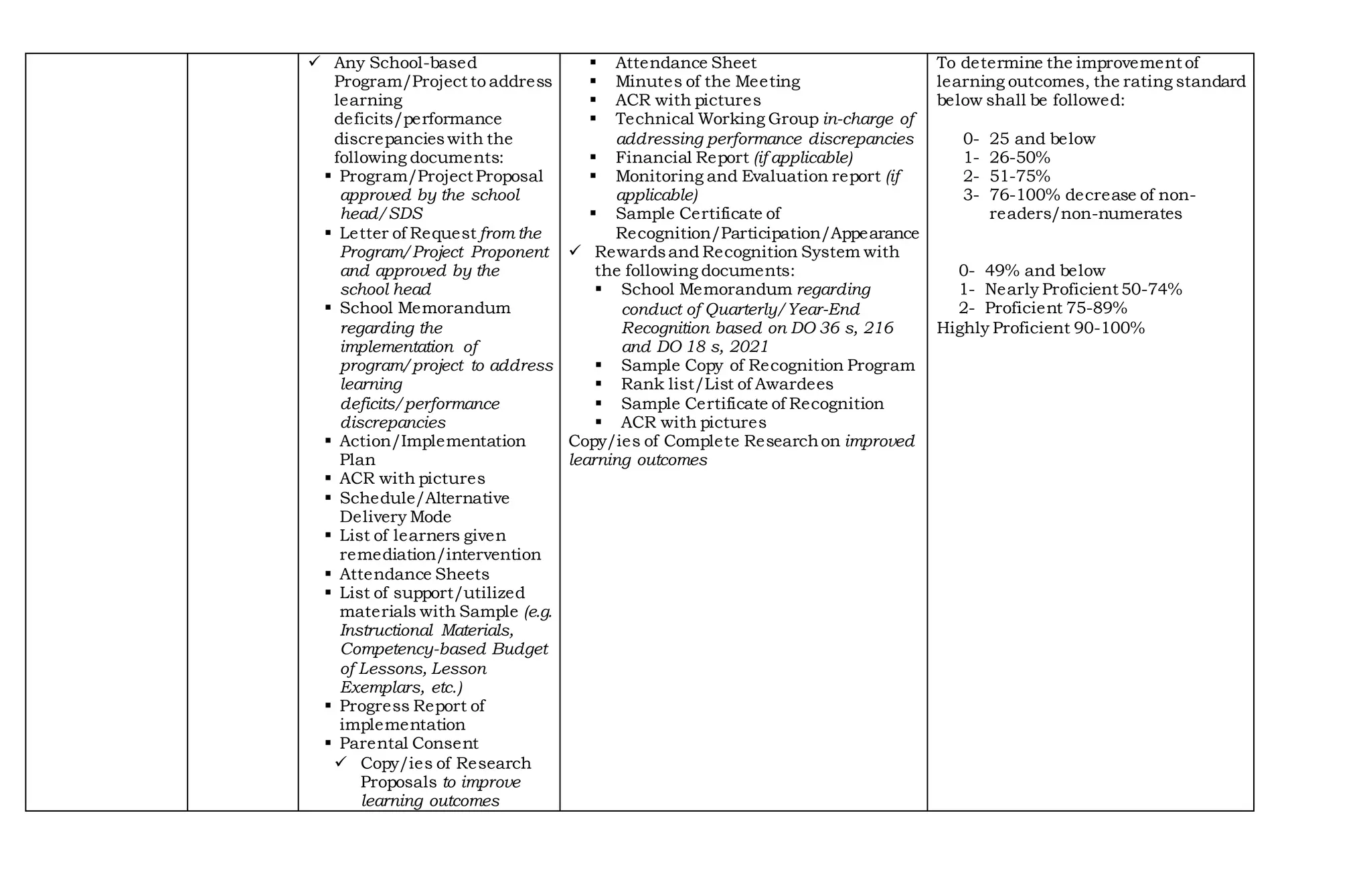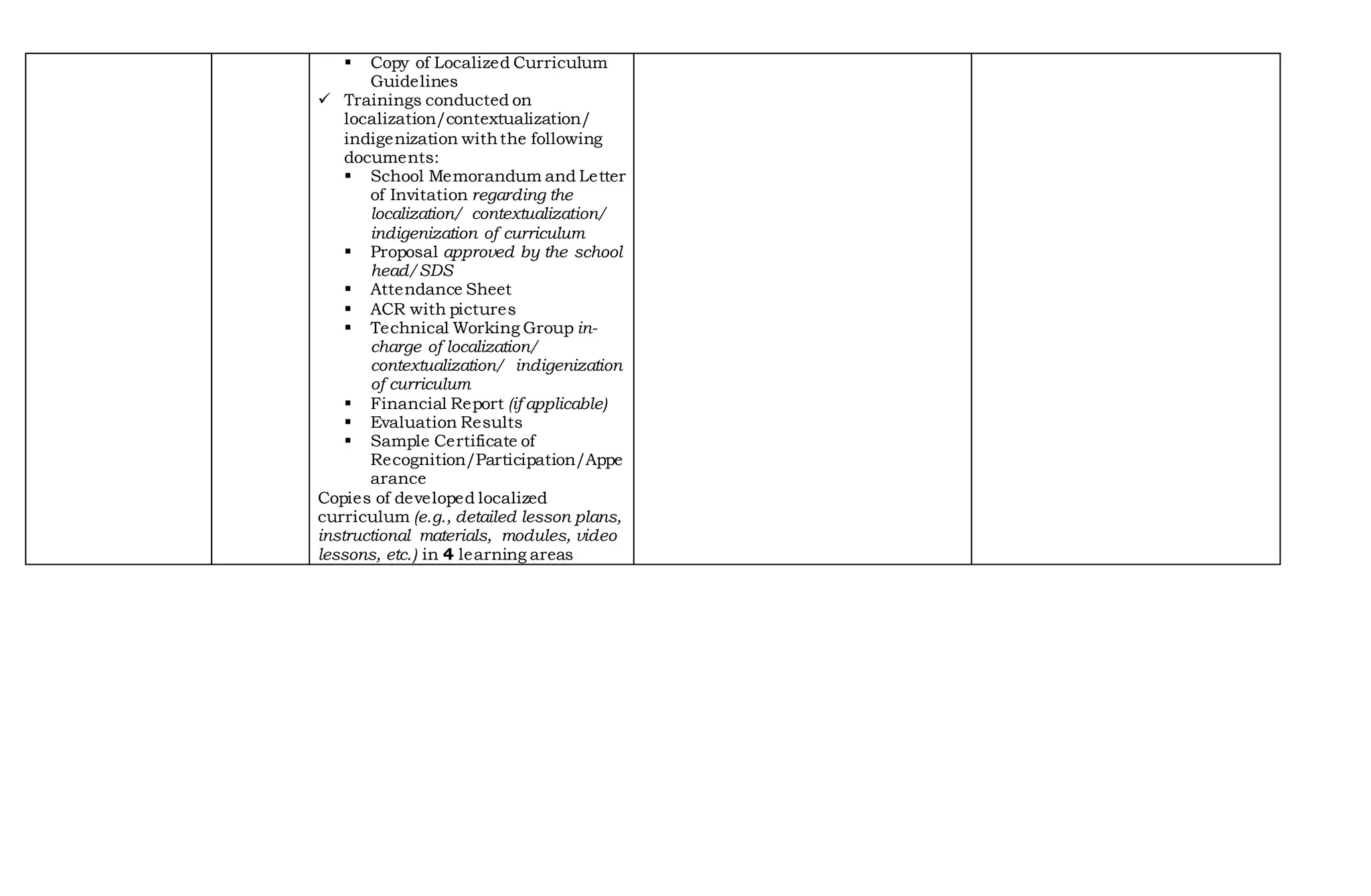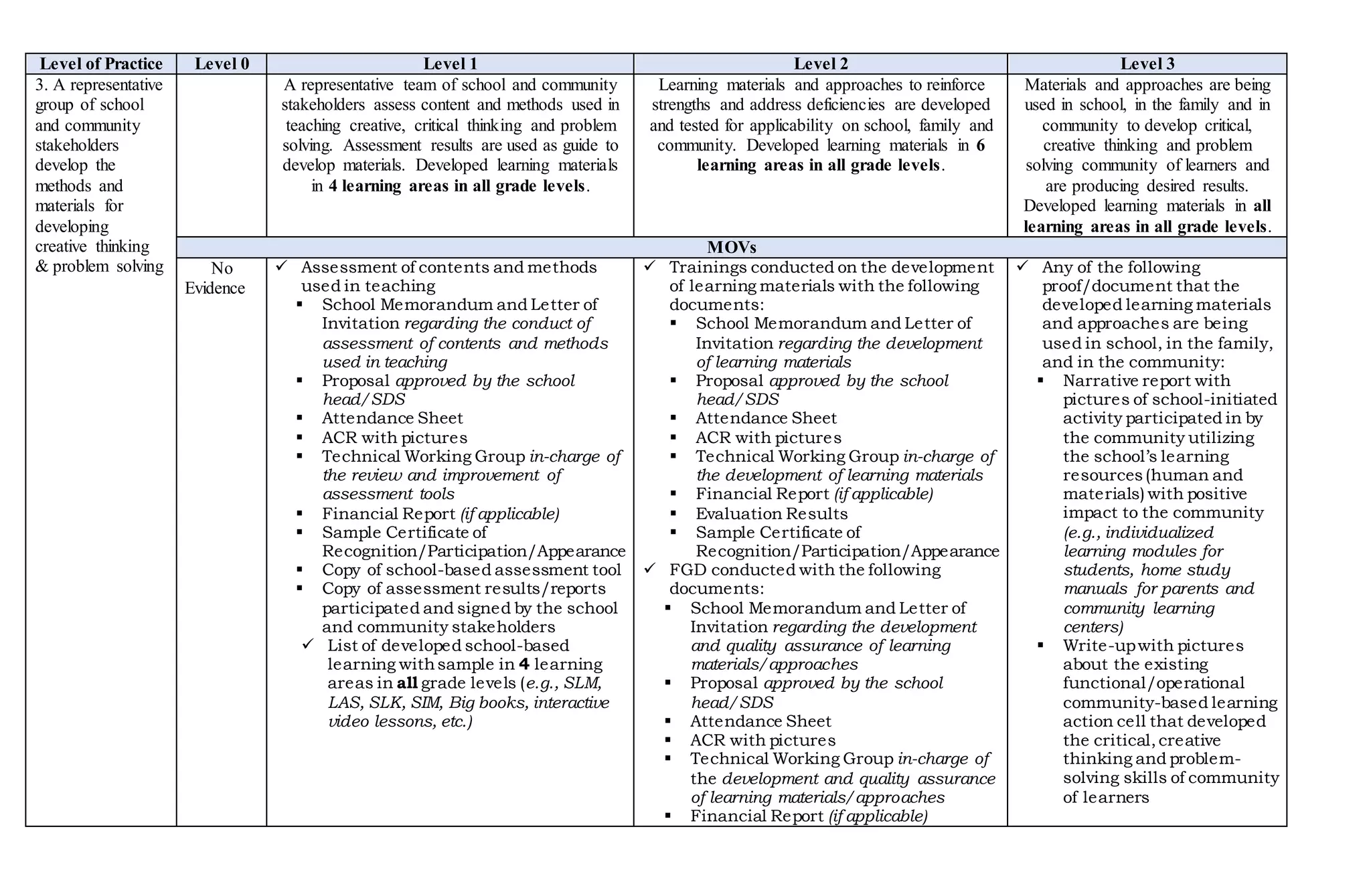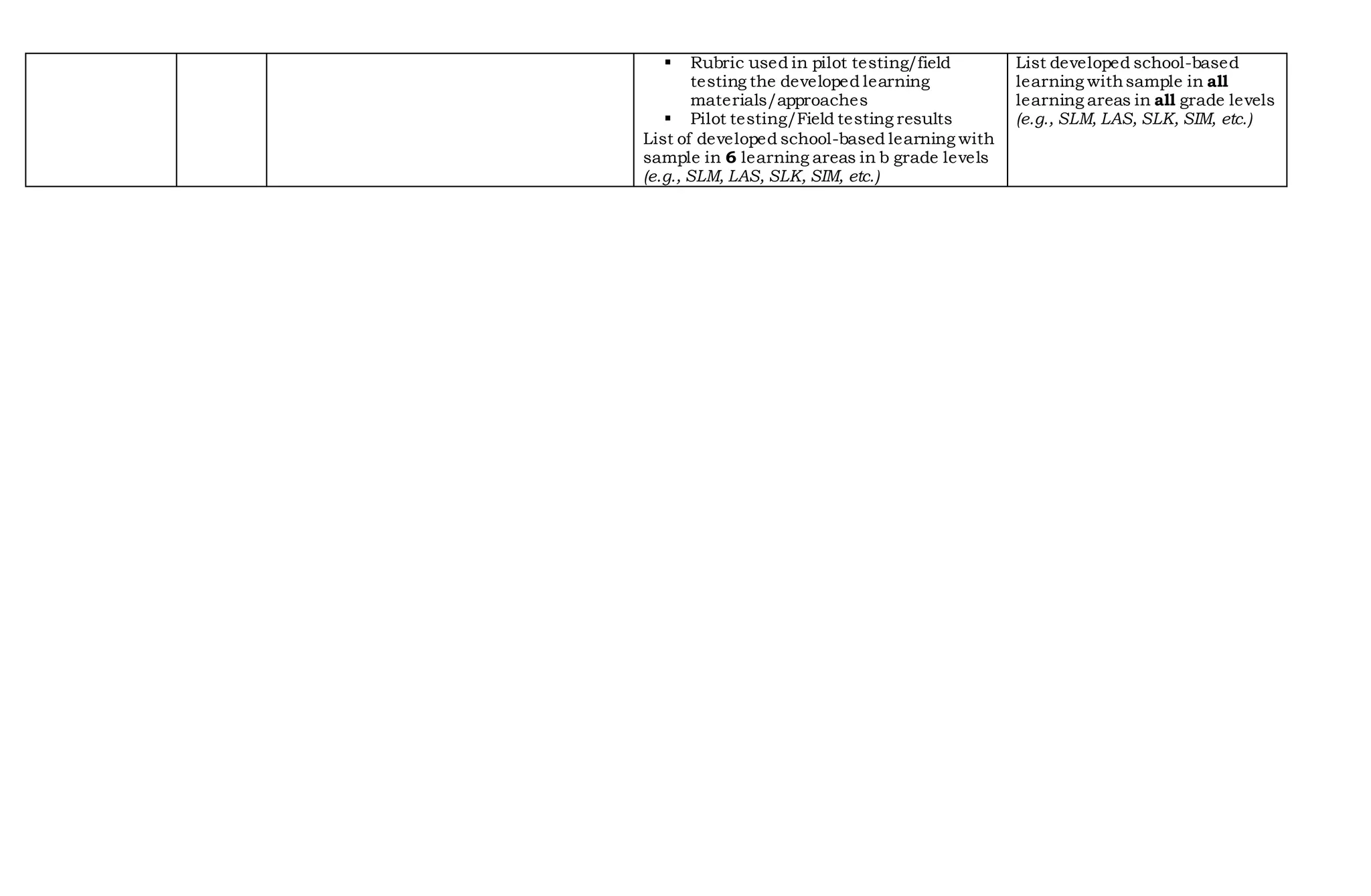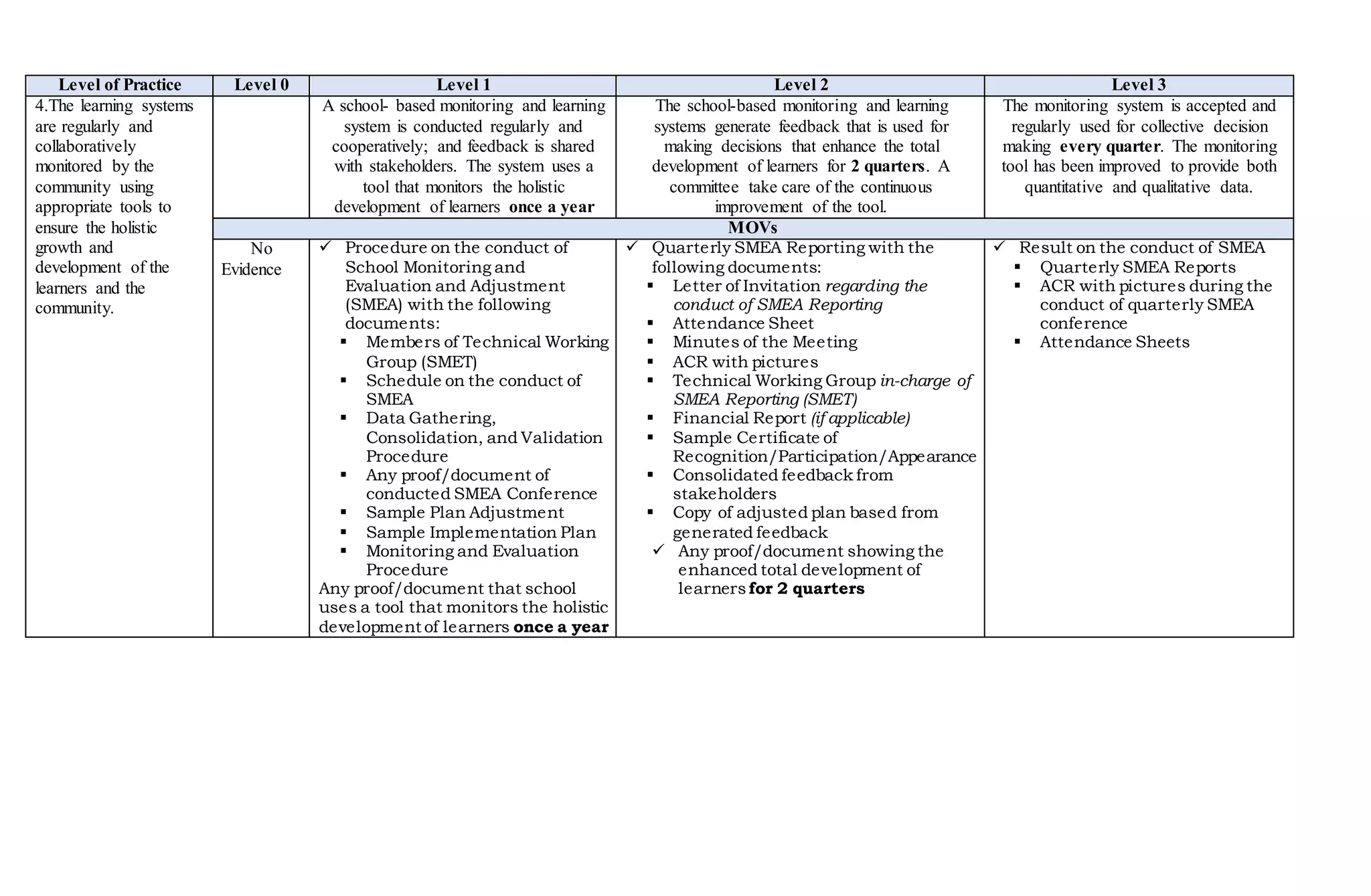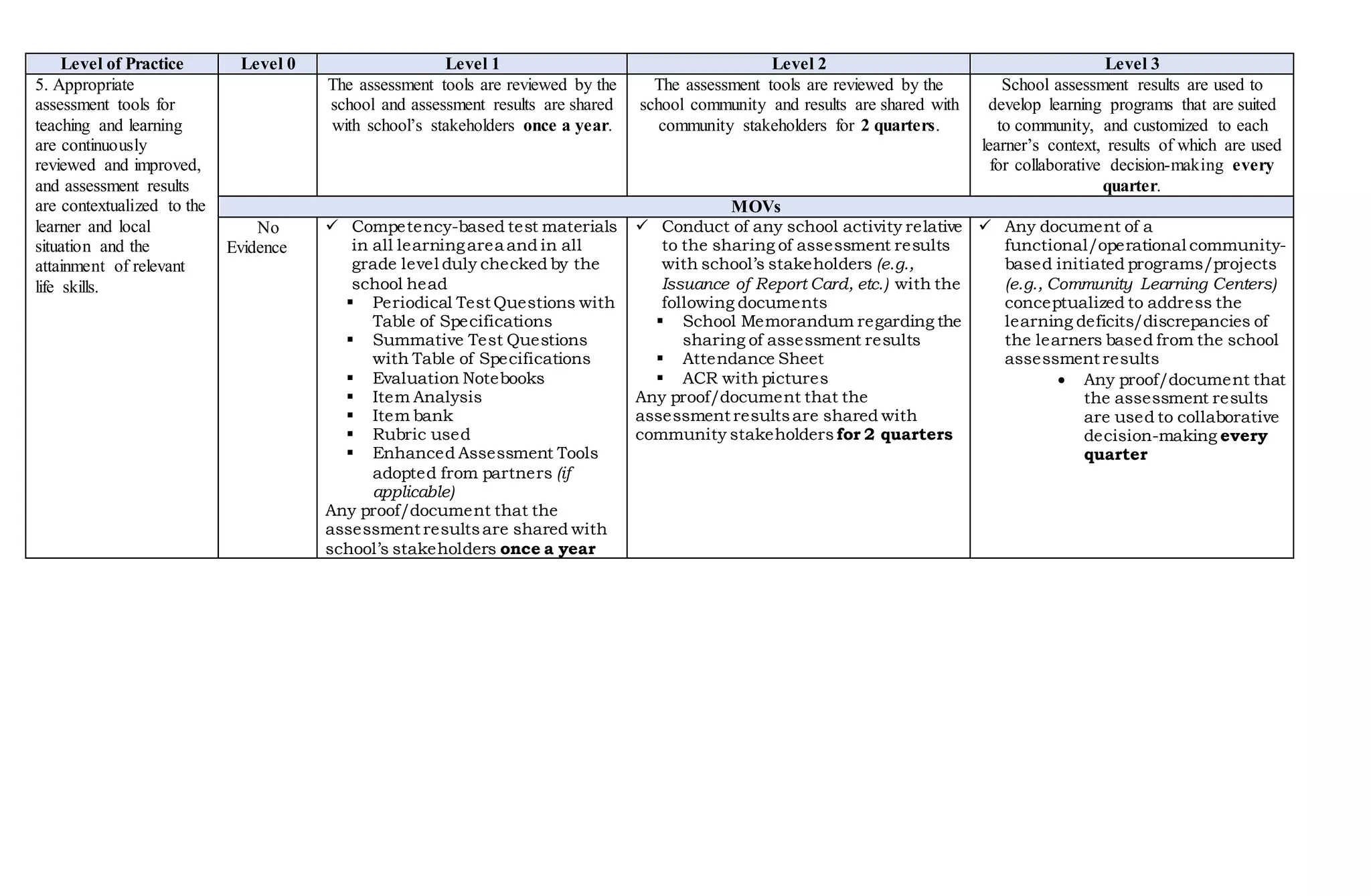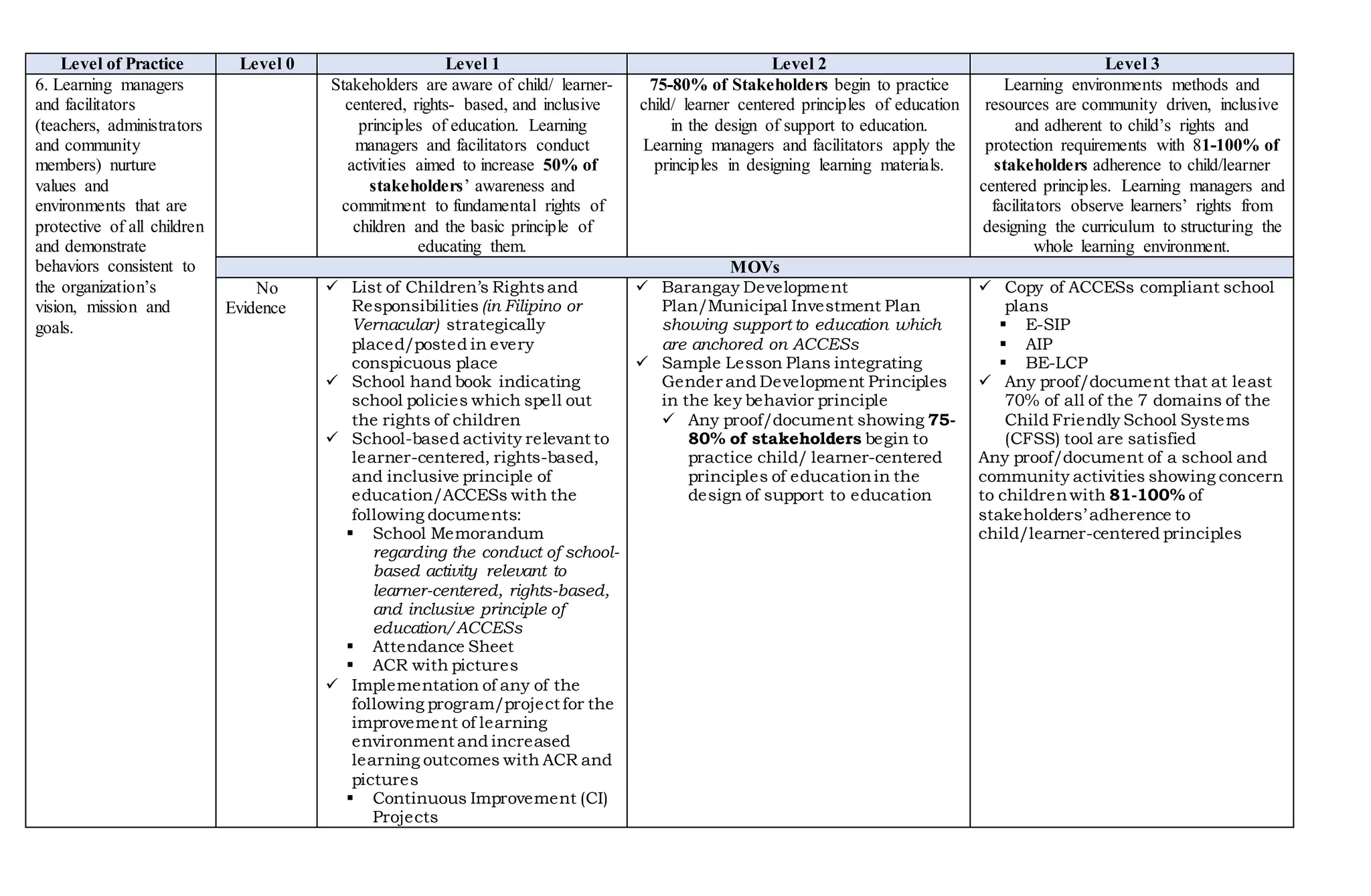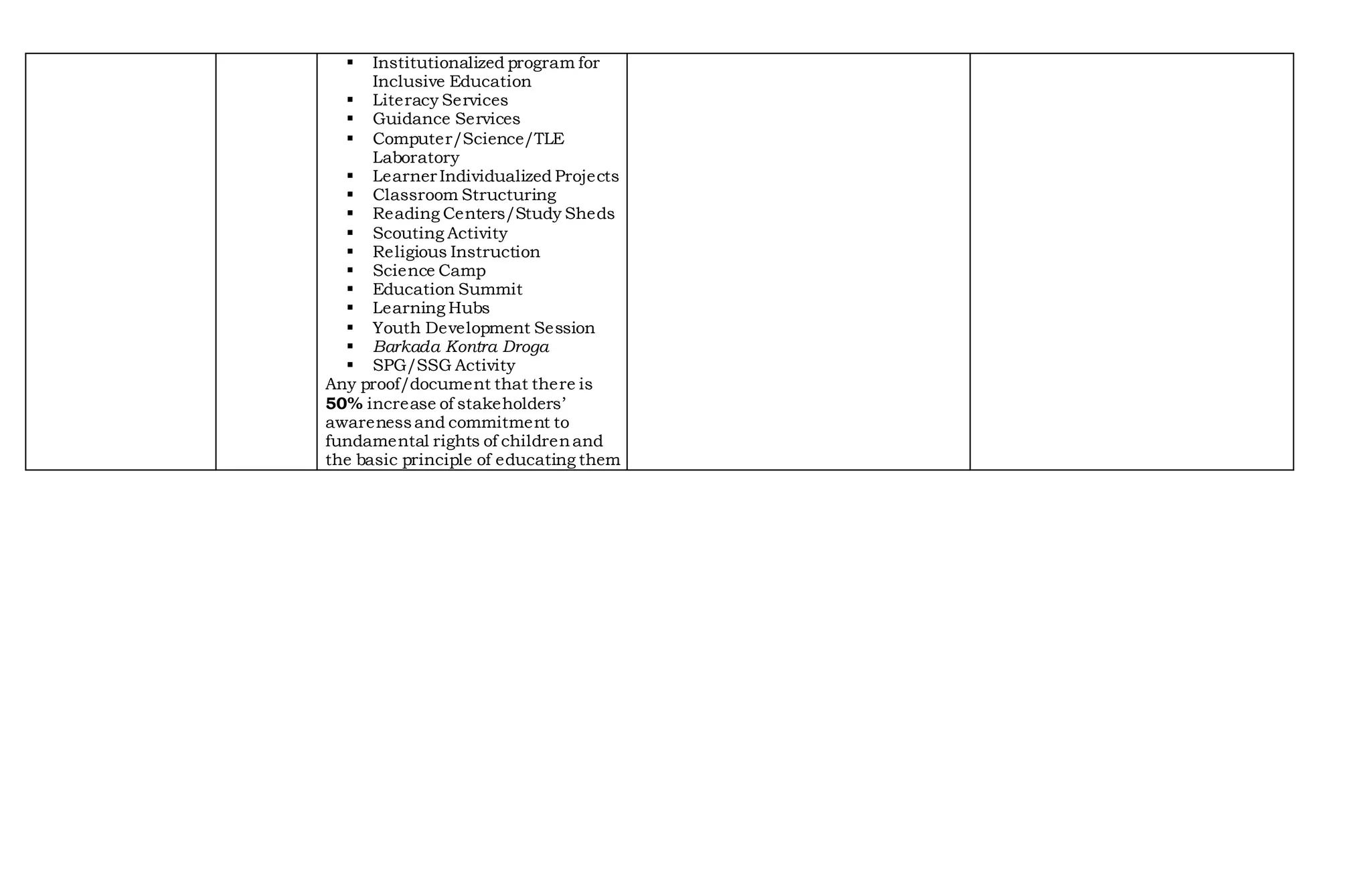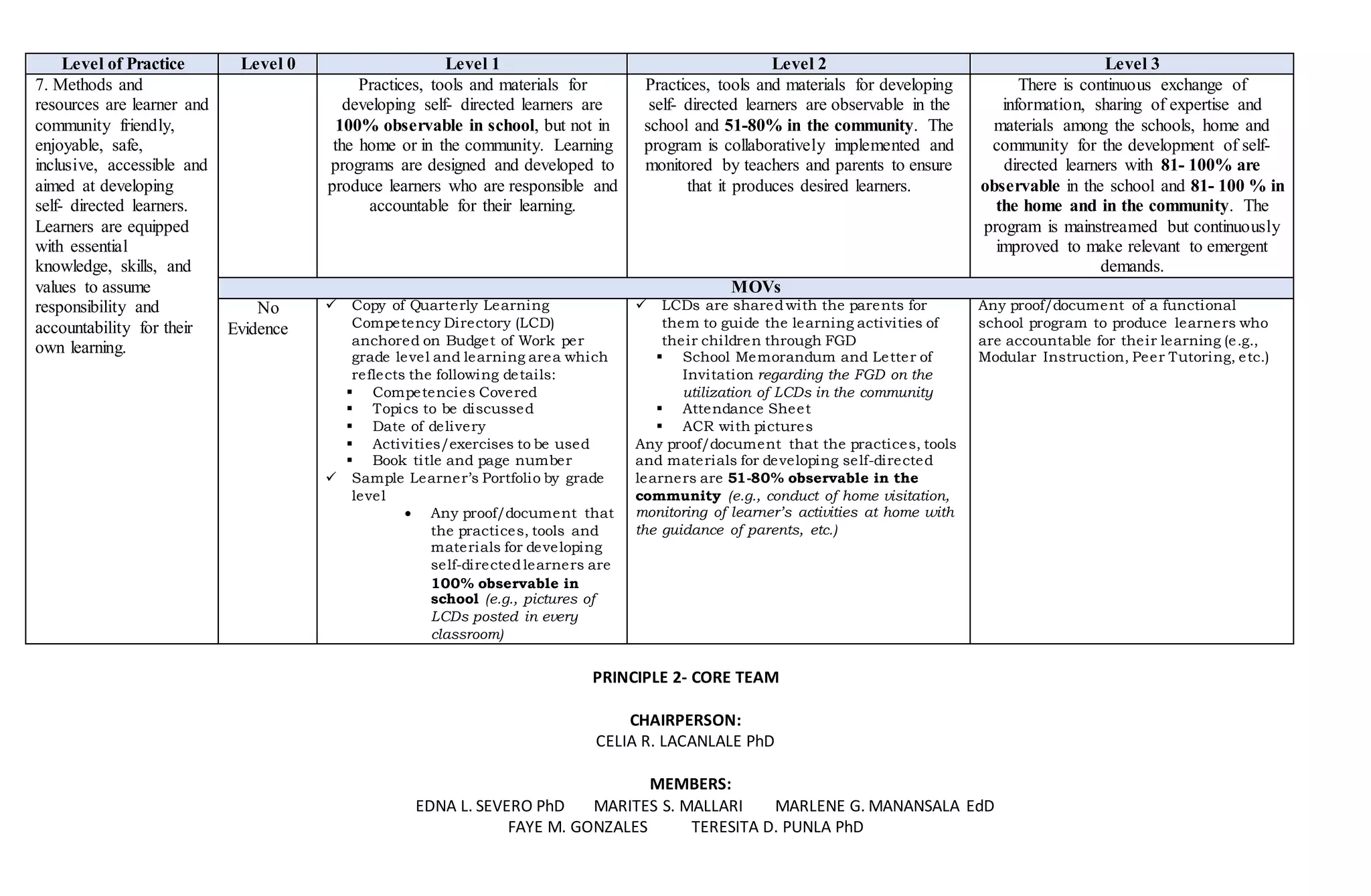This document outlines levels of practice for curriculum and instruction. It discusses three key areas: 1) Providing for the development needs of all learners, 2) Localizing the curriculum to make it more meaningful, and 3) Developing methods and materials for creative thinking and problem solving. For each area, it describes the actions, documents, and materials needed to achieve higher levels of practice from 0 to 3. It provides a comprehensive set of metrics and requirements for curriculum development, implementation, and evaluation.

